Abstract
Six pigeons were trained on a signal-detection procedure. They were required to peck the left key when a 5-second white light had been presented, and the right key when a 10-second light had been presented. These two correct responses were followed by food reinforcement with a probability of .7. Errors, left responses after the 10-second stimulus or right responses after the 5-second stimulus, were initially followed by a 3-second blackout of the chamber. In nine subsequent experimental conditions, errors were followed by food reinforcement with increasing probability while the probability of reinforcement for correct responses was kept constant. The percentage of correct responses decreased as error reinforcement probability increased. A matching model of detection performance, in which discrimination is a joint function of stimulus discriminability and stimulus-reinforcement association, provided a convincing fit to the data and to two sets of published data. The model also fitted published data on multiple and multiple-concurrent free-operant performance. This description of detection performance in terms of matching offers both accurate prediction of complex behavior and measures of discriminability with wide generality.
Keywords: generalized matching law, signal-detection theory, discrimination, discriminability, response bias, pecking, pigeons
Full text
PDF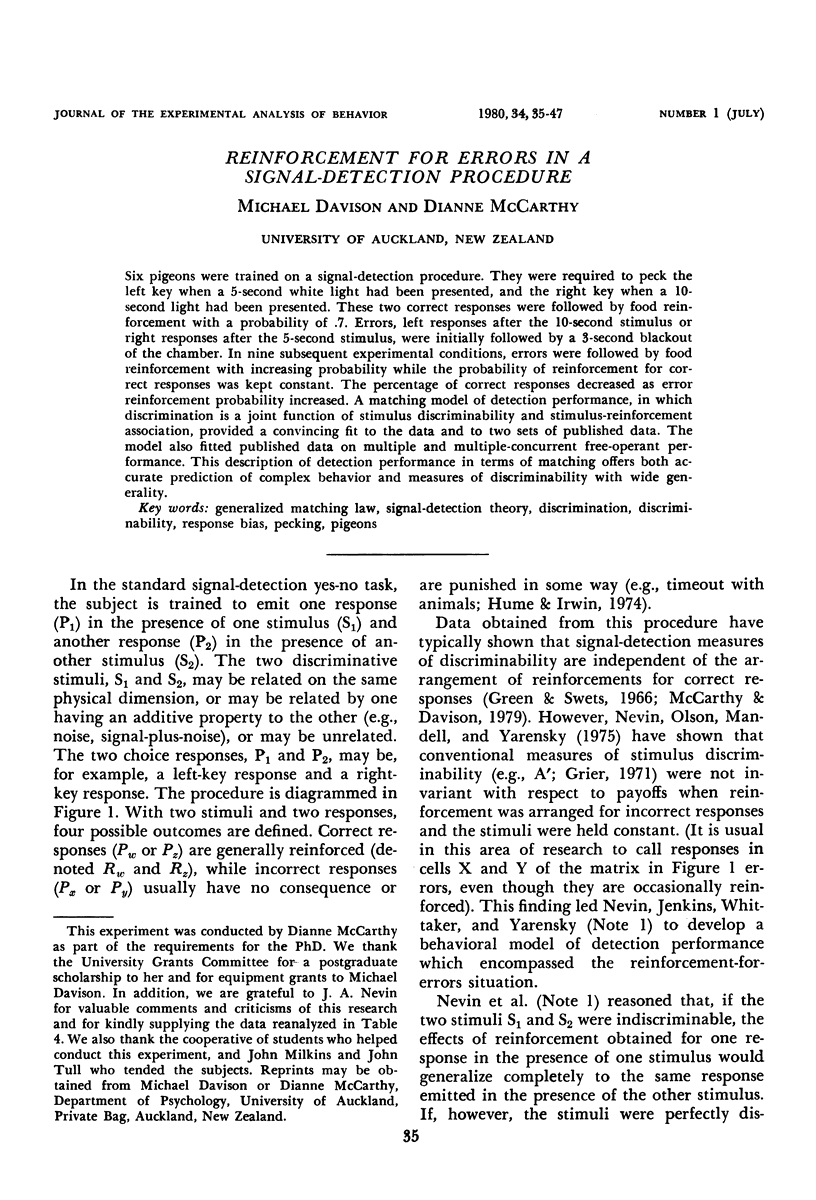
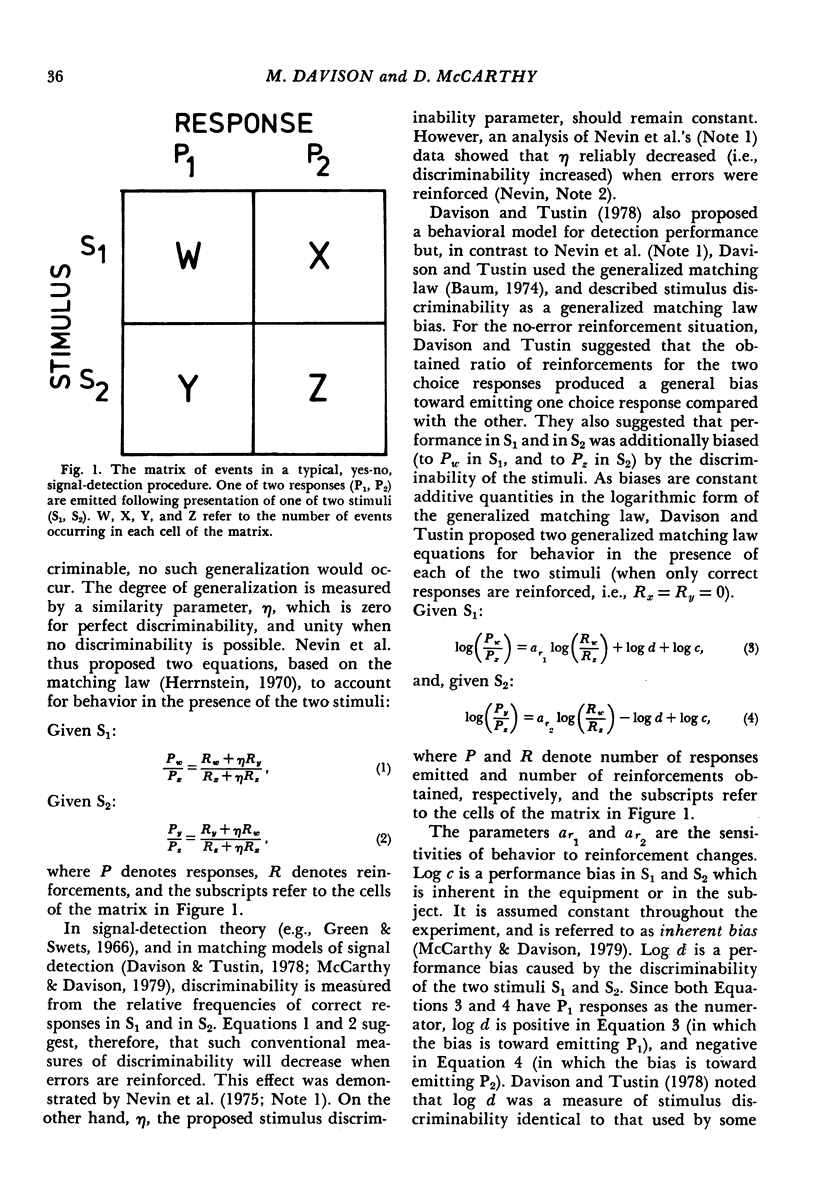
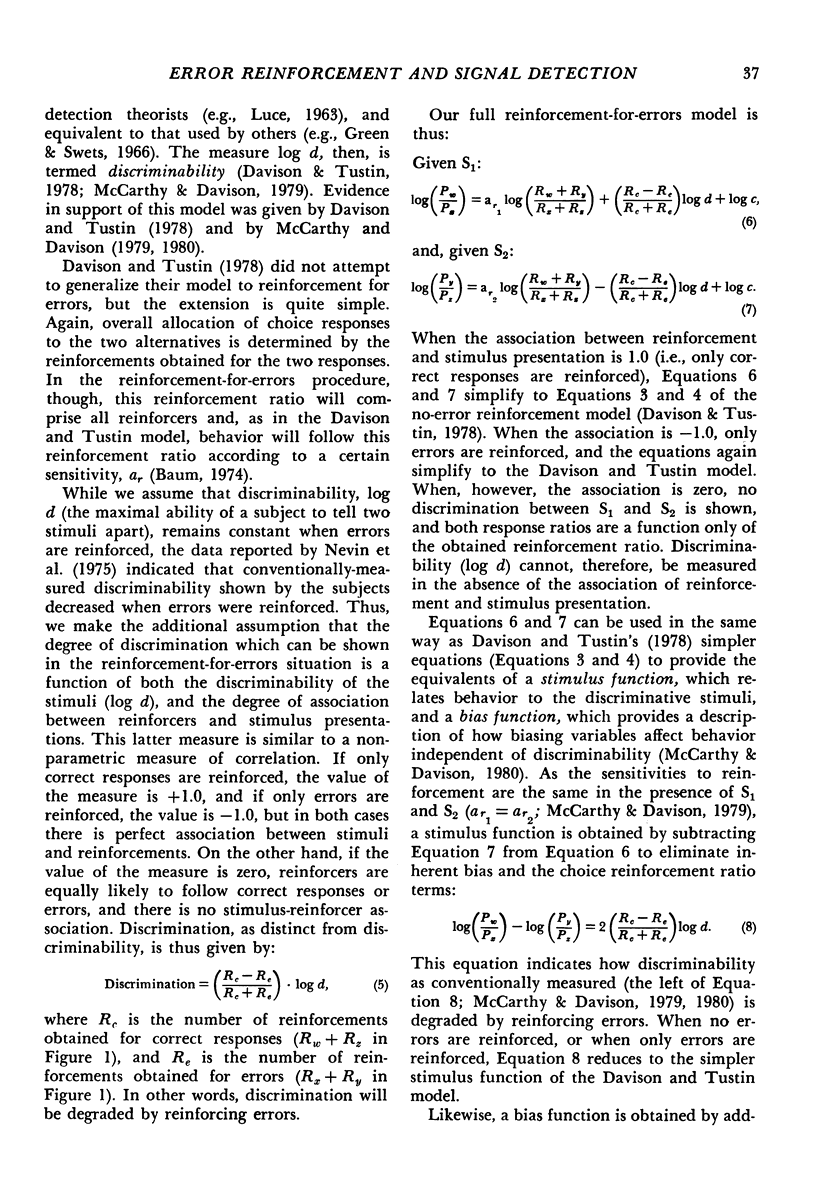
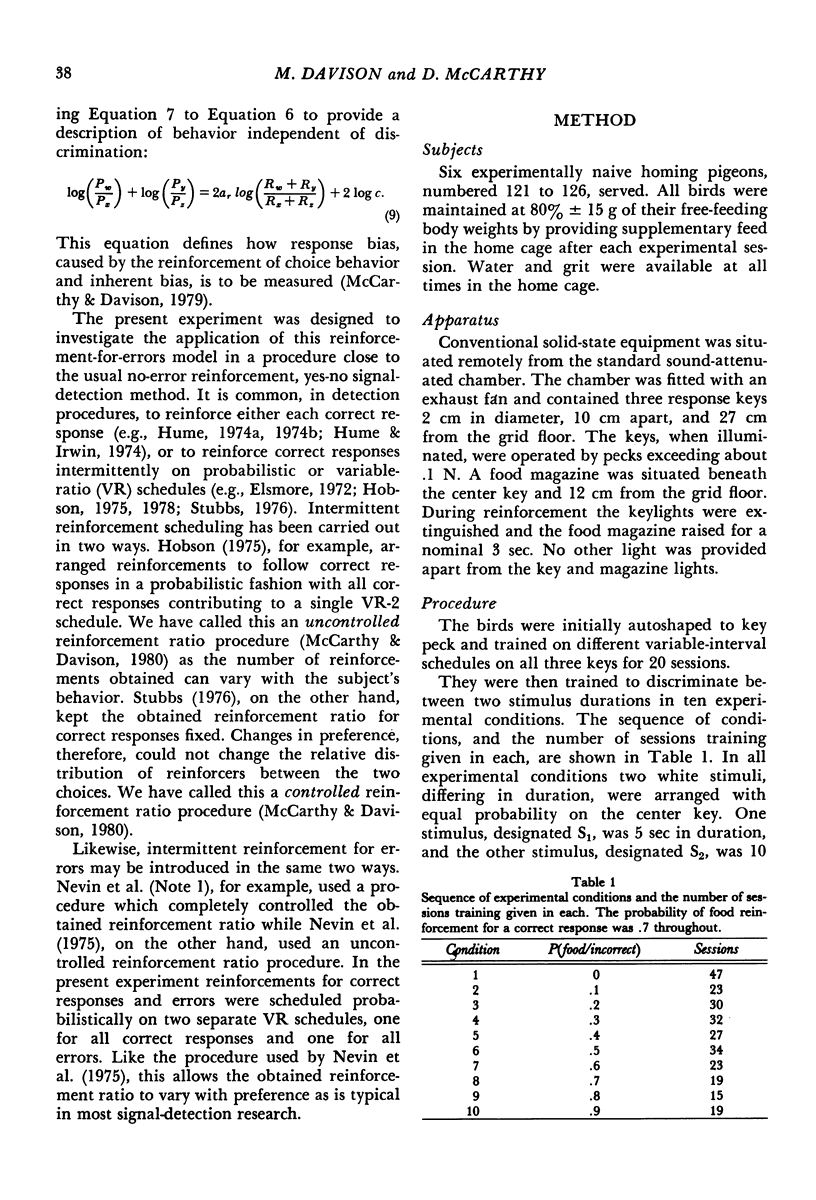
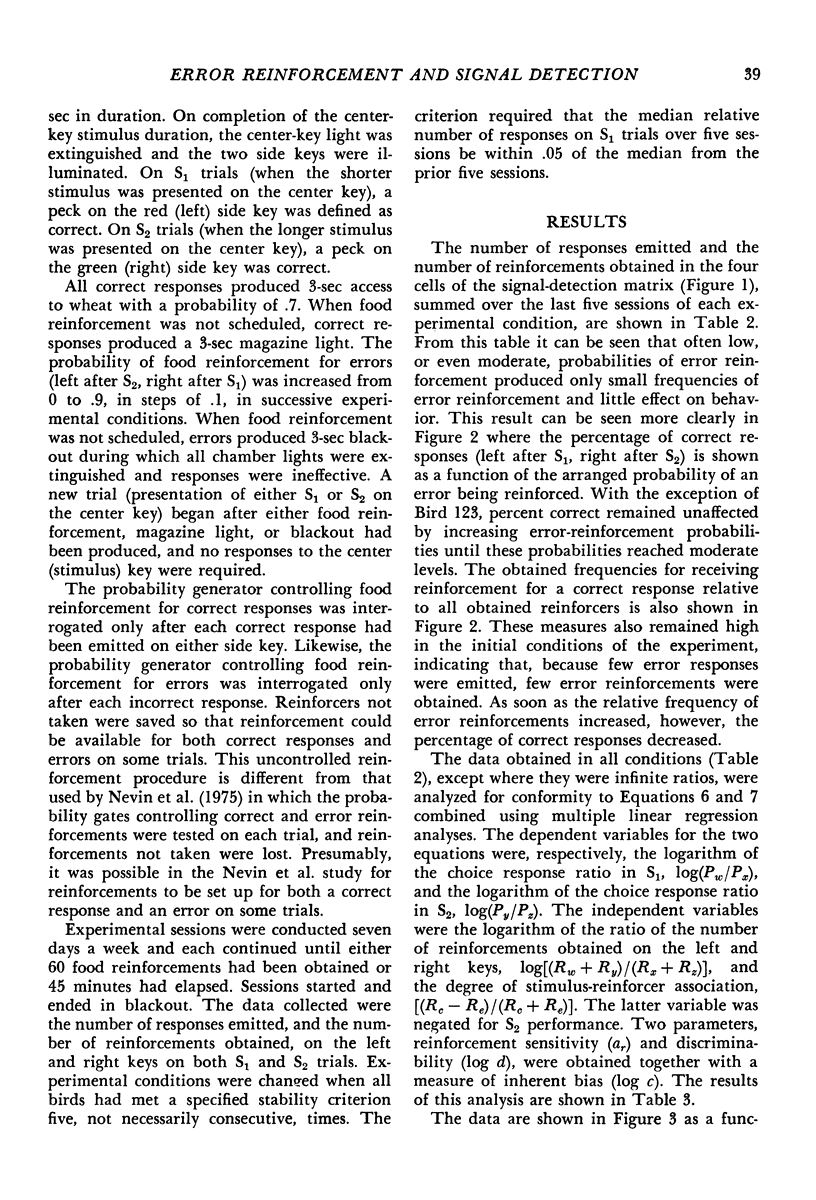
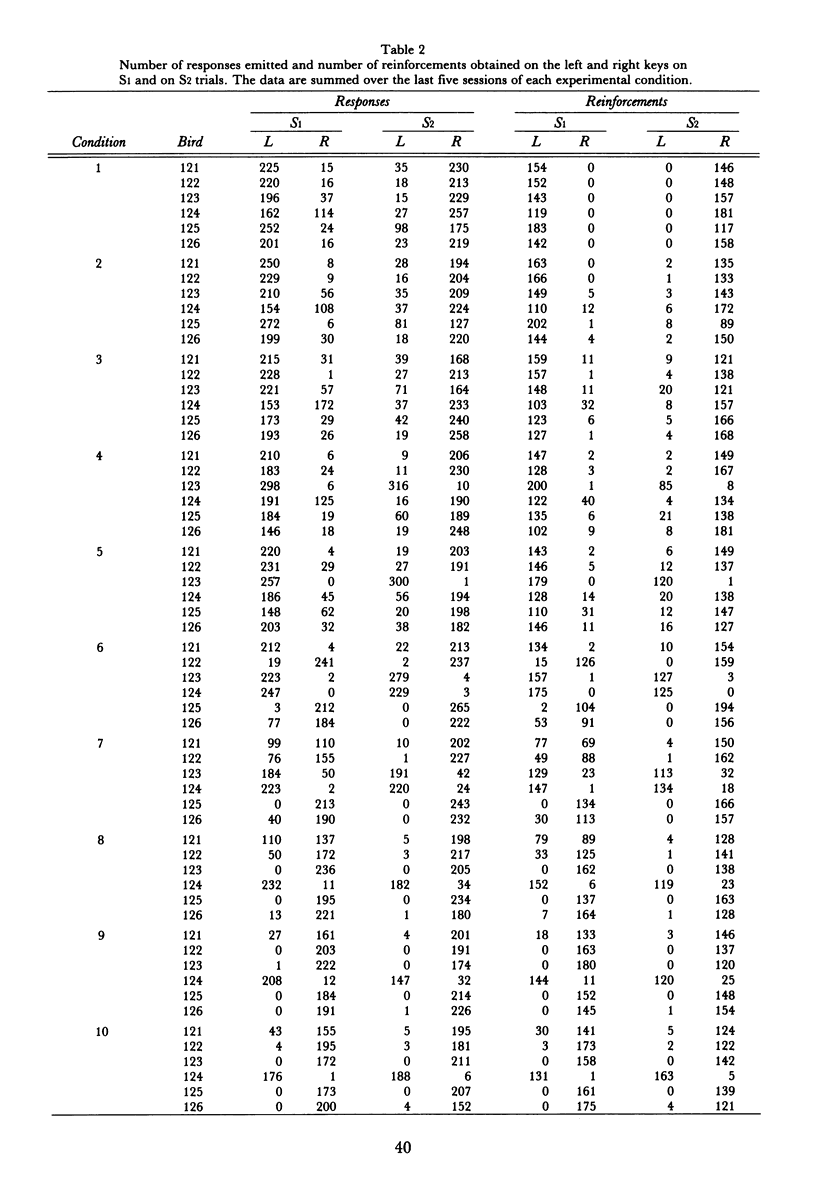
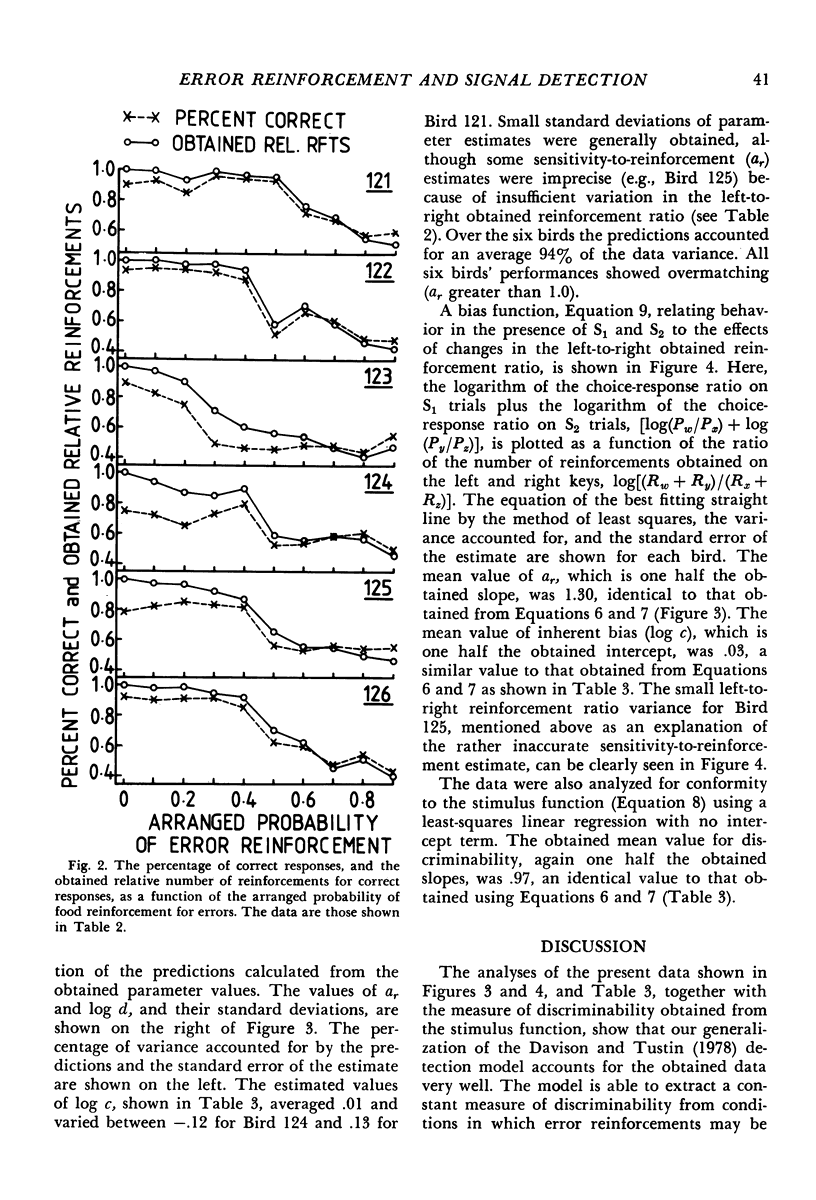
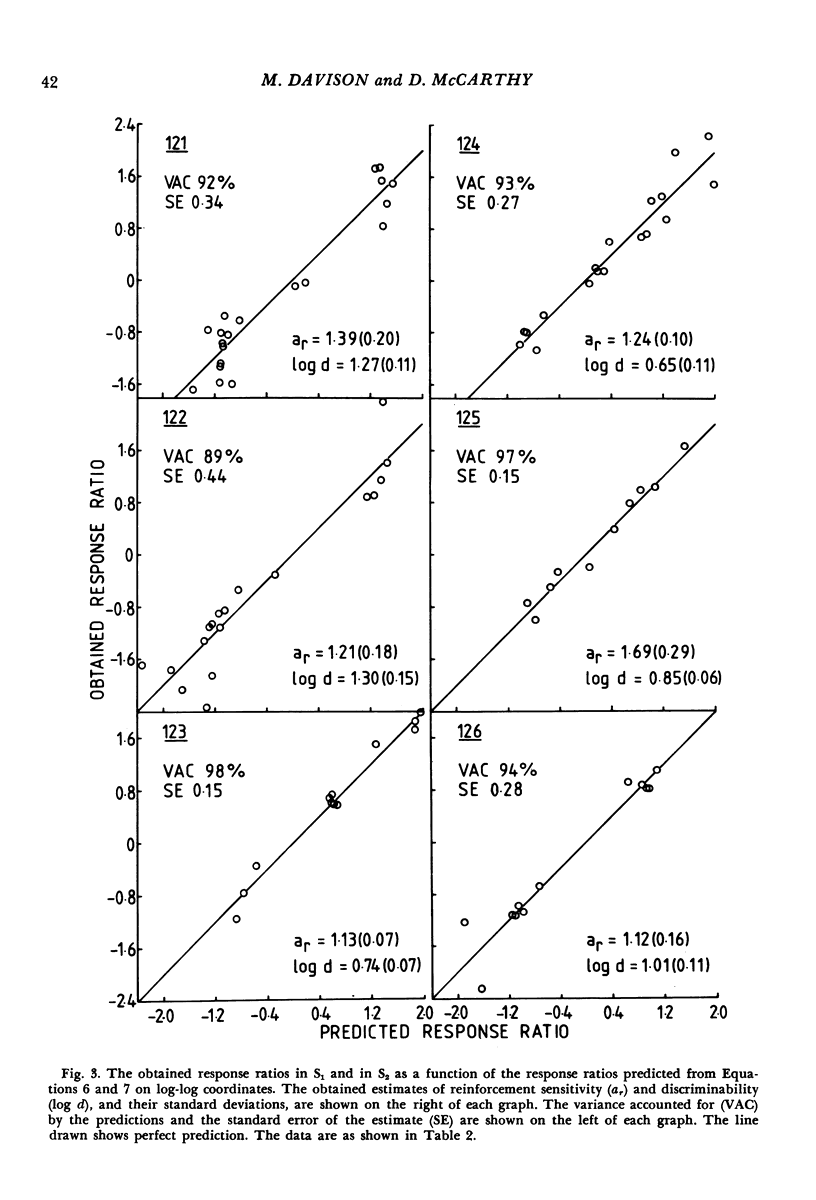
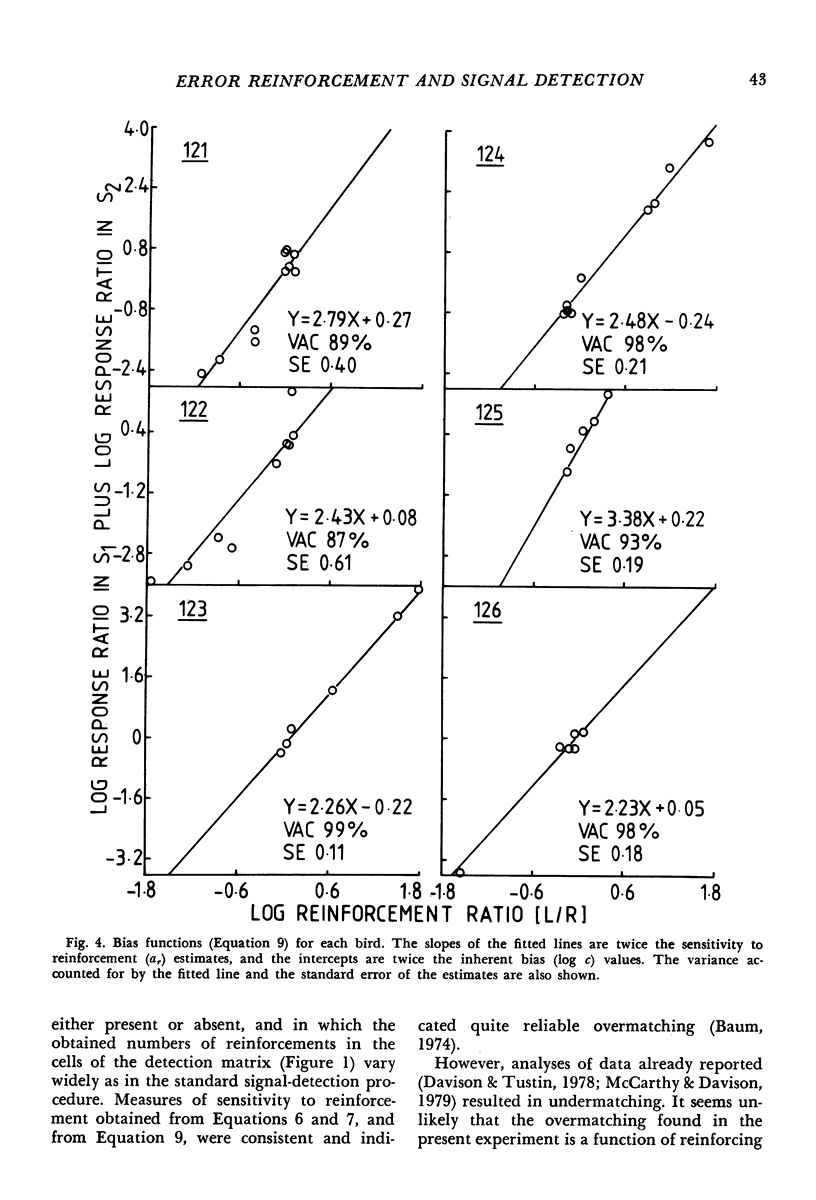
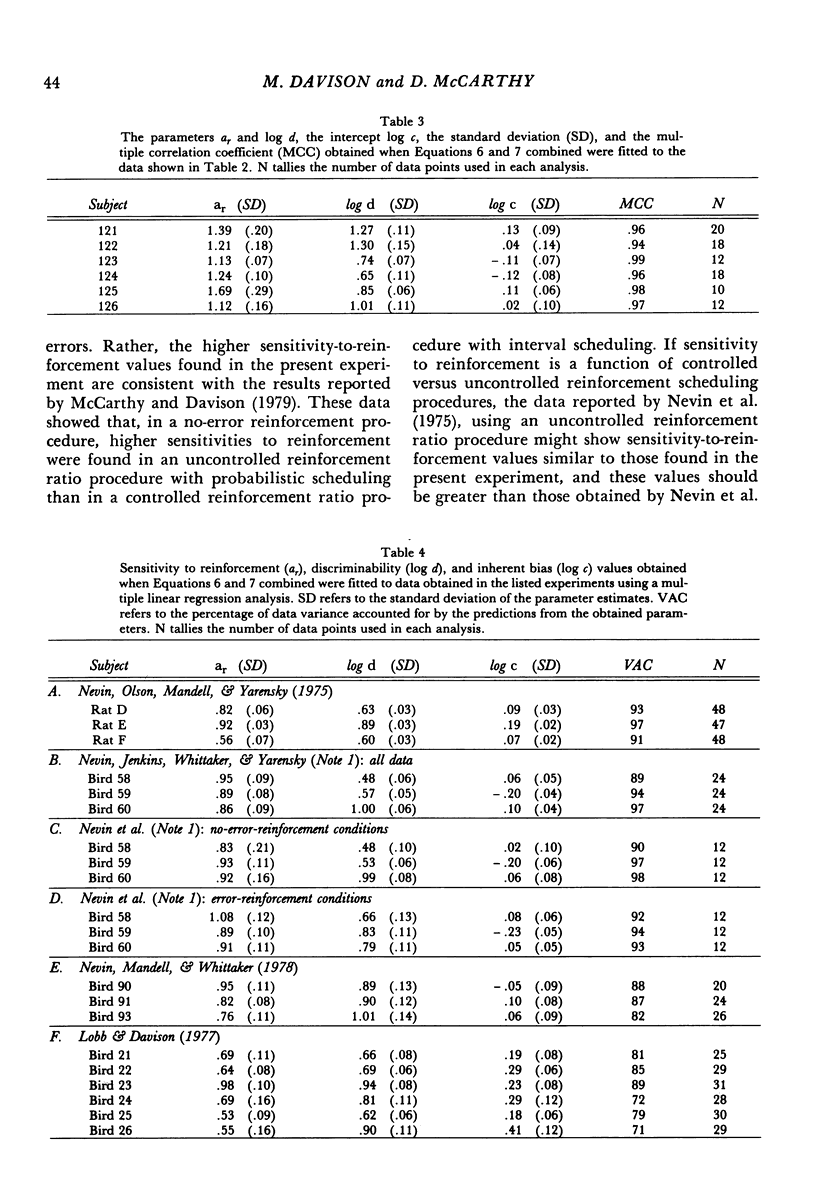
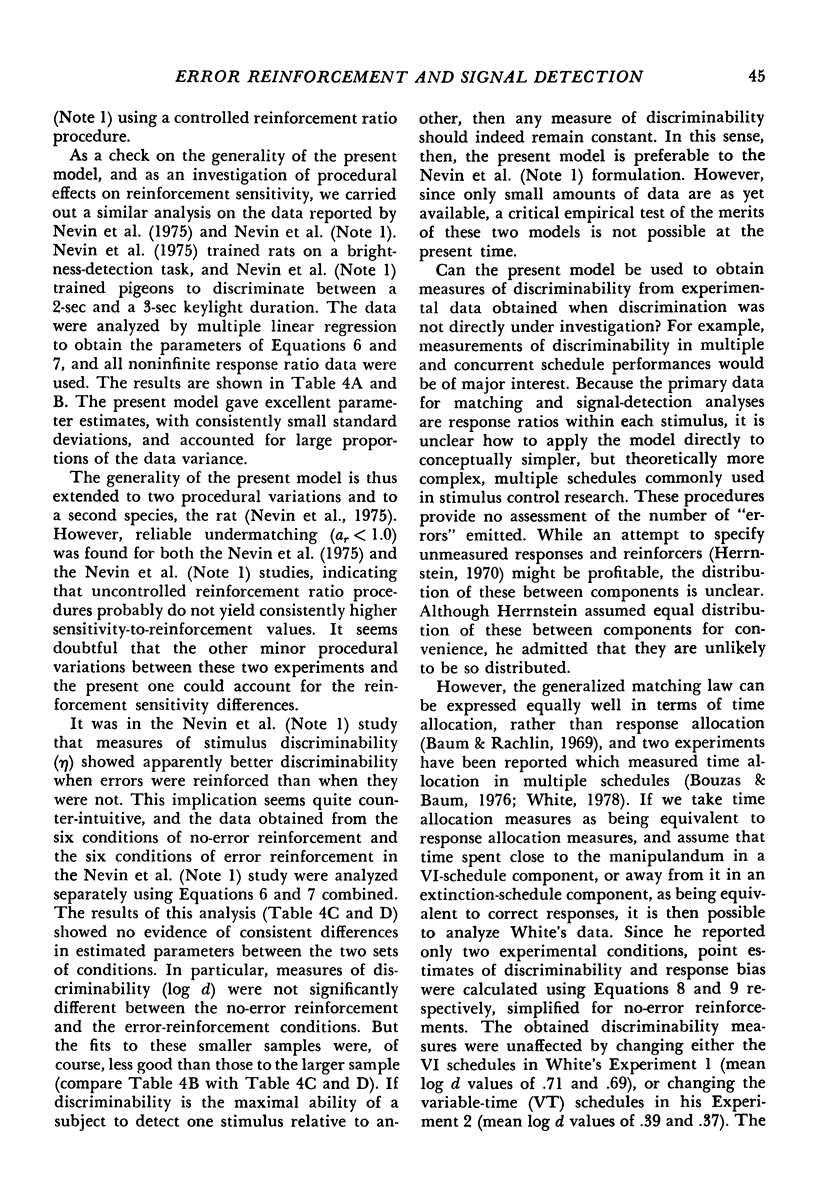
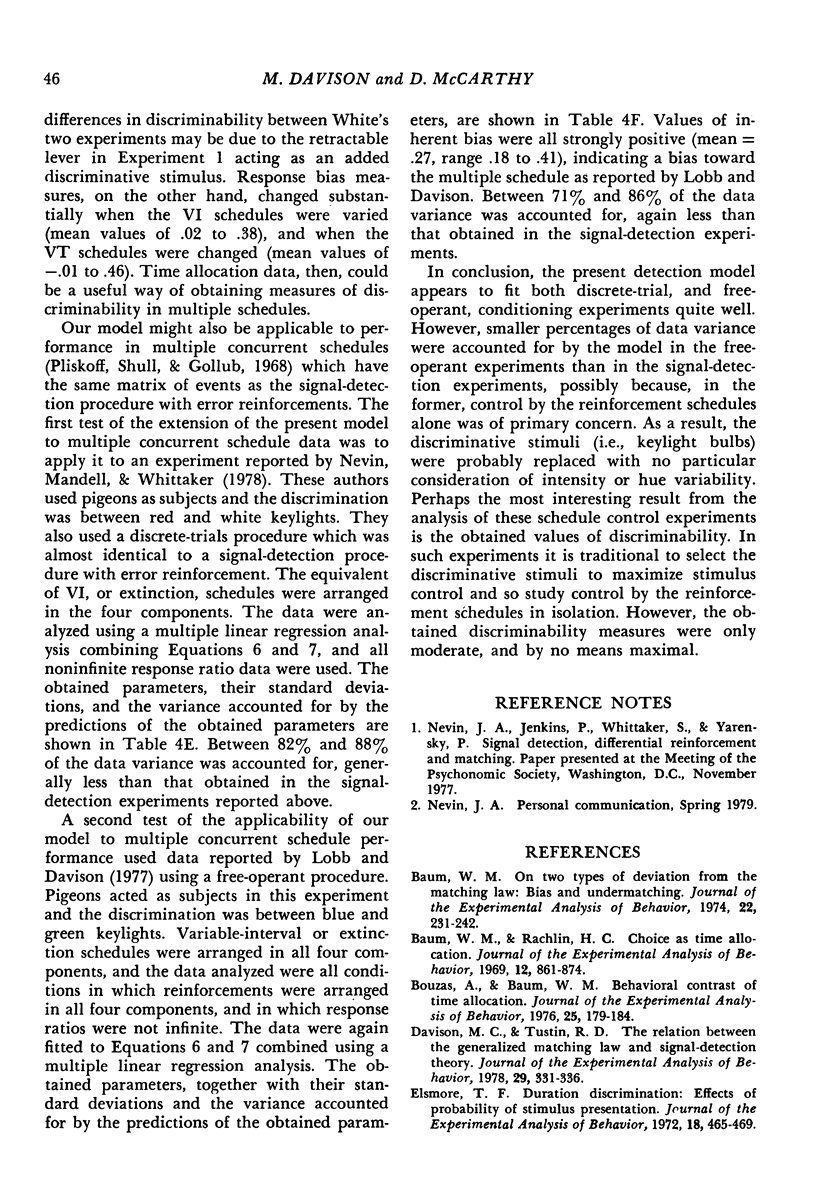
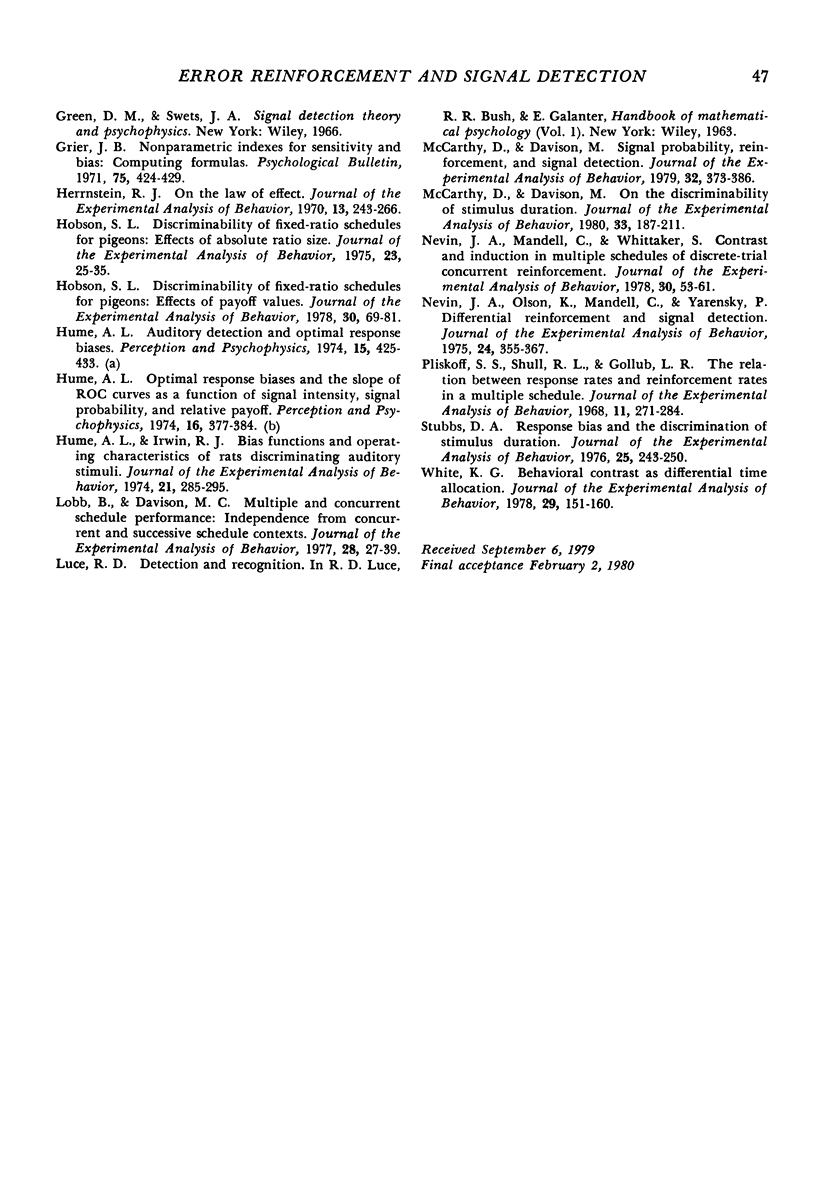
Selected References
These references are in PubMed. This may not be the complete list of references from this article.
- Baum W. M. On two types of deviation from the matching law: bias and undermatching. J Exp Anal Behav. 1974 Jul;22(1):231–242. doi: 10.1901/jeab.1974.22-231. [DOI] [PMC free article] [PubMed] [Google Scholar]
- Baum W. M., Rachlin H. C. Choice as time allocation. J Exp Anal Behav. 1969 Nov;12(6):861–874. doi: 10.1901/jeab.1969.12-861. [DOI] [PMC free article] [PubMed] [Google Scholar]
- Bouzas A., Baum W. M. Behavioral contrast of time allocation. J Exp Anal Behav. 1976 Mar;25(2):179–184. doi: 10.1901/jeab.1976.25-179. [DOI] [PMC free article] [PubMed] [Google Scholar]
- Davison M. C., Tustin R. D. The relation between the generalized matching law and signal-detection theory. J Exp Anal Behav. 1978 Mar;29(2):331–336. doi: 10.1901/jeab.1978.29-331. [DOI] [PMC free article] [PubMed] [Google Scholar]
- Elsmore T. F. Duration discrimination: effects of probability of stimulus presentation. J Exp Anal Behav. 1972 Nov;18(3):465–469. doi: 10.1901/jeab.1972.18-465. [DOI] [PMC free article] [PubMed] [Google Scholar]
- Grier J. B. Nonparametric indexes for sensitivity and bias: computing formulas. Psychol Bull. 1971 Jun;75(6):424–429. doi: 10.1037/h0031246. [DOI] [PubMed] [Google Scholar]
- Herrnstein R. J. On the law of effect. J Exp Anal Behav. 1970 Mar;13(2):243–266. doi: 10.1901/jeab.1970.13-243. [DOI] [PMC free article] [PubMed] [Google Scholar]
- Hobson S. L. Discriminability of fixed-ratio schedules for pigeons: effects of absolute ratio size. J Exp Anal Behav. 1975 Jan;23(1):25–35. doi: 10.1901/jeab.1975.23-25. [DOI] [PMC free article] [PubMed] [Google Scholar]
- Hobson S. L. Discriminability of fixed-ratio schedules for pigeons: effects of payoff values. J Exp Anal Behav. 1978 Jul;30(1):69–81. doi: 10.1901/jeab.1978.30-69. [DOI] [PMC free article] [PubMed] [Google Scholar]
- Hume A. L., Irwin R. J. Bias functions and operating characteristics of rats discriminating auditory stimuli. J Exp Anal Behav. 1974 Mar;21(2):285–295. doi: 10.1901/jeab.1974.21-285. [DOI] [PMC free article] [PubMed] [Google Scholar]
- Lobb B., Davison M. C. Multiple and concurrent schedule performance: independence from concurrent and successive schedule contexts. J Exp Anal Behav. 1977 Jul;28(1):27–39. doi: 10.1901/jeab.1977.28-27. [DOI] [PMC free article] [PubMed] [Google Scholar]
- McCarthy D., Davison M. On the discriminability of stimulus duration. J Exp Anal Behav. 1980 Mar;33(2):187–211. doi: 10.1901/jeab.1980.33-187. [DOI] [PMC free article] [PubMed] [Google Scholar]
- McCarthy D., Davison M. Signal probability, reinforcement and signal detection. J Exp Anal Behav. 1979 Nov;32(3):373–386. doi: 10.1901/jeab.1979.32-373. [DOI] [PMC free article] [PubMed] [Google Scholar]
- Nevin J. A., Mandell C., Whittaker S. Contrast and induction in multiple schedules of discrete-trial concurrent reinforcement. J Exp Anal Behav. 1978 Jul;30(1):53–61. doi: 10.1901/jeab.1978.30-53. [DOI] [PMC free article] [PubMed] [Google Scholar]
- Nevin J. A., Olson K., Mandell C., Yarensky P. Differential reinforcement and signal detection. J Exp Anal Behav. 1975 Nov;24(3):355–367. doi: 10.1901/jeab.1975.24-355. [DOI] [PMC free article] [PubMed] [Google Scholar]
- Pliskoff S. S., Shull R. L., Gollub L. R. The relation between response rates and reinforcement rates in a multiple schedule. J Exp Anal Behav. 1968 May;11(3):271–284. doi: 10.1901/jeab.1968.11-271. [DOI] [PMC free article] [PubMed] [Google Scholar]
- Stubbs D. A. Response bias and the discrimination of stimulus duration. J Exp Anal Behav. 1976 Mar;25(2):243–250. doi: 10.1901/jeab.1976.25-243. [DOI] [PMC free article] [PubMed] [Google Scholar]
- White K. G. Behavioral contrast as differential time allocation. J Exp Anal Behav. 1978 Mar;29(2):151–160. doi: 10.1901/jeab.1978.29-151. [DOI] [PMC free article] [PubMed] [Google Scholar]


